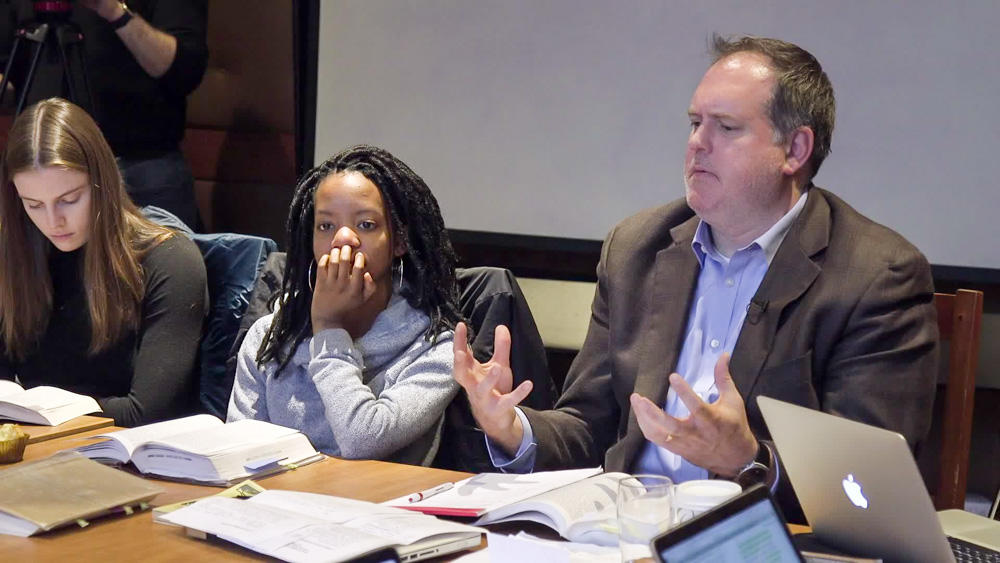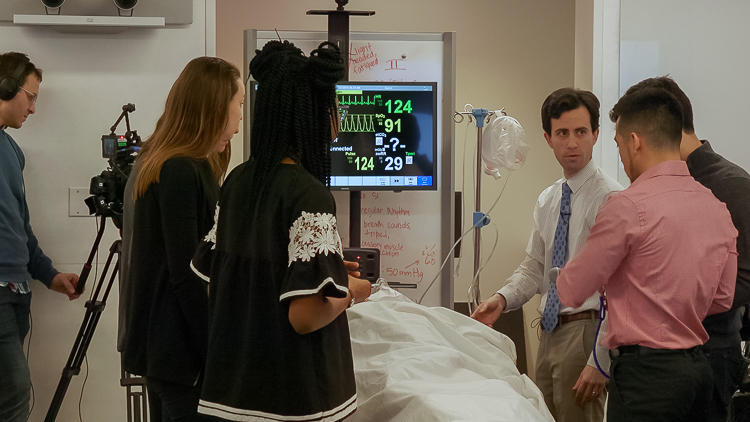Once students are in the habit of discussing ideas among themselves, a key question for a professor is when to jump in. When should we provide helpful context? When should we inject a probing question to encourage students to dig deeper? Is it good practice to always correct misinformation? In this video, Timothy Patrick McCarthy shares how he generally strives to hold back in discussion but will intervene when he notices that something “really crucial” to student understanding has not yet surfaced.
Intervening selectively in a student-led discussion
Instructor
Timothy Patrick McCarthy, Lecturer on History and Literature
Student Group
Undergraduate/Graduate
School
Harvard College
Course
Stories of Slavery & Freedom
Group Size
16 students
- Pay close attention to a conversation’s rhythm to determine when to interject. If the conversation is flowing and focused, avoid interrupting.
- Correct major factual errors so the whole class doesn’t walk away with misconceptions
- Underscore particularly insightful comments or when student comments make you personally think about a reading or an idea in a new way
- If you sense a major takeaway or perspective is missing, pose a question that might lead the students to where that missing idea or perspective resides
- A series of well-planned guided questions can facilitate the development of critical thinking and enable students to gain deeper conceptual understanding (Peterson, 2009)
- One study found that students’ overall performance improves when direct instruction soon follows peer interaction, a balanced approach to teaching that proves beneficial across student ability levels (Smith et al., 2011)
- Some educators argue that clear, focused guiding questions generate more focused, reflective discussions (McTighe & Wiggins, 2013)
- Harvard’s Derek Bok Center on Teaching and Learning provides “Techniques for Responding” to students in discussion
- In another Instructional Moves video, Professor Todd Rakoff describes how he responds to students when he sees a need for additional reasoning or an expanded response




